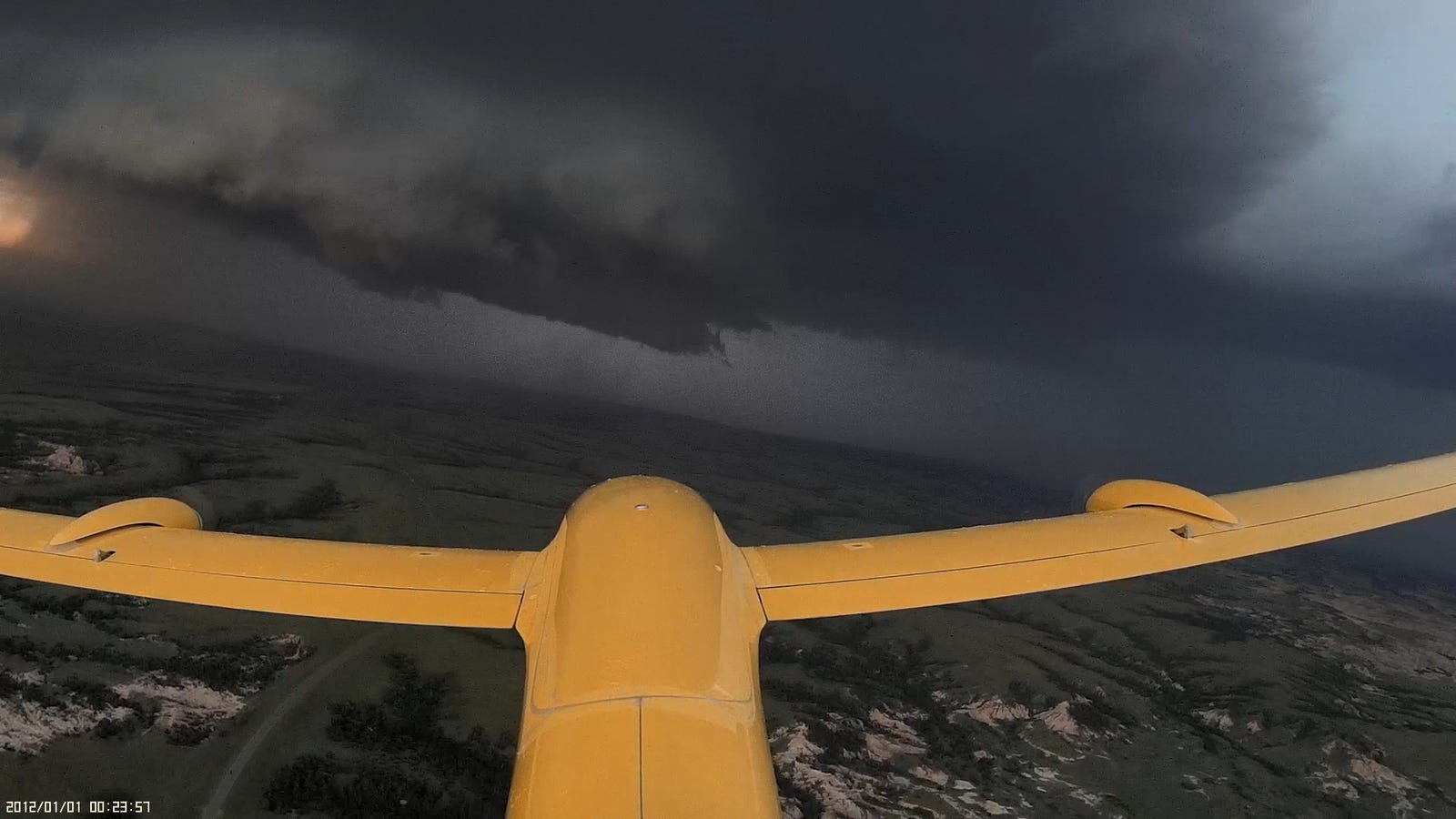
The drone named TTwistor3 approaching a supercell thunderstorm in southern South Dakota. Image: Integrated Remote and In-Situ Sensing (IRISS), University of Colorado Boulder
By Miro Korenha and Alexandra Patel
As tornadoes increase in range and frequency across the United States, a group of scientists has been using drones to better understand tornadoes and forecast them in an effort to save lives. Project TORUS has mobilized over 50 researchers and students to follow severe thunderstorms and collect enough data to improve models of supercell thunderstorms. Adam Houston an atmospheric scientist at the University of Nebraska who helped assemble the TORUS research team together told Earther, “You can’t forecast a phenomenon you don’t understand.”
A Terrifying Tornado Season: This year the United States experienced its 4th worst tornado season. In large swaths of the south and midwest, tornados destroyed communities and resulted in numerous injuries and fatalities. During the month of May, the number of tornados far exceeded the monthly average, making it “one of the most active stretches on recent record”, according to tornado researcher John Allen. In just one day, 55 tornadoes were reported, with 27 following the next day and totaling to 225 confirmed since May 17th (as reported on May 30th). While most common in the Central Plains and along the southeast of the United States, according to the National Weather Service, tornadoes have been reported across all 50 states.
Why This Matters: The United States is home to 3/4 of all tornadoes that form in the world in any given year and research suggests that these types of tornado outbreaks could become more common as climate change destabilizes the atmosphere. There were also indications that natural climate shifts did help shape this most recent tornado outbreak. Tornadoes are deadly and unpredictable and we desperately need more research to better understand how they form, grow and move.
July 1, 2019 » climate change, extreme weather, storms, thunderstorms, tornados

